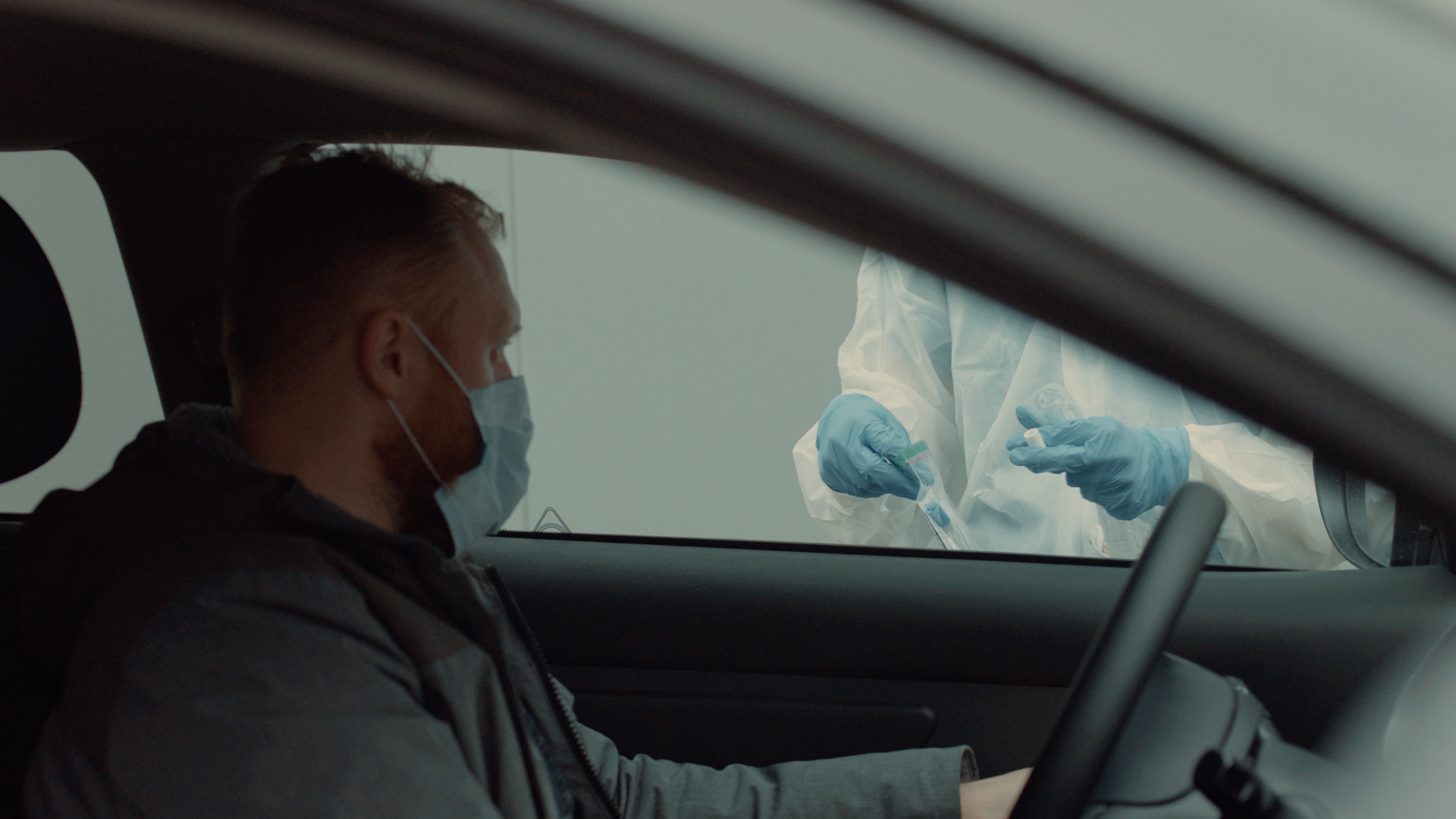The total number of people tested for COVID-19 in Alabama, according to the Alabama Department of Public Health, jumped by more than 18,000 on Saturday. It was the single largest increase in the total number of tests reported in a day since the state began performing tests in early March.
The total number of reported tests jumped from 52,641 (about 1.07 percent of Alabama’s population) to 71,344 (1.46 percent of the population) in a single day. The large relative increase in total tests performed gave some people, particularly online, the impression that Alabama had begun to dramatically and almost miraculously expand its testing in the course of a few days.
{{CODE1}}
But many of the negative tests reported Saturday in that large batch were weeks old, according to the Alabama Department of Public Health, some dating back to the first few days of expanded testing when drive-thru centers in Jefferson County began testing hundreds of people in mid-March.
“We had some reports from a couple of big labs who had not been recording negatives and just sort of sent in these bulk reports kind of all at once,” said State Health Officer Dr. Scott Harris in an interview with APR Monday. “All those tests didn’t occur on the same day or anything like that.”
While labs are required, by law, to report positive test results for COVID-19 within a few hours, negative results are a much different matter. In the early days of the outbreak, there was more focus on the positive results, but as discussion gears up surrounding efforts to “reopen” the state’s economy by lifting or easing Gov. Kay Ivey’s stay-at-home order, the total number of tests performed has become an increasingly important metric. To get that number, the state needs to be able to capture negative tests, too, not just the positive ones.
Public health experts — including researchers at the Harvard Global Health Institute and the University of Washington Institute for Health Metrics and Evaluation — have recommended that states need to drastically increase their testing capacity before a safe reopening can happen. Testing and contact tracing are imperative to being able to find, identify and contain new cases to prevent a second spike in infections.
Without labs reporting their negative tests in a timely manner, it’s difficult to estimate how many people are being tested on a daily or even weekly basis in the state, Harris said.
The large batch of new tests reported Saturday shows just how hard it is for state officials to get a grasp around how many tests are being performed. For the public, it’s even harder to understand. A spike in new tests reported on a single day can be misleading when, in reality, those 18,000 tests were performed over the course of a month.
“For a lot of labs, for example, the pop-up labs that were in Jefferson County, the first drive-thrus, they were just keeping track of that on paper,” Harris said of the negative test results. “They have only just now started sending us negative results. And that’s one of the reasons the test number jumped so much in one day. We just got a box of papers, and people had to go in and manually input all those lab results, and we still don’t know if we’re getting them all.”
The Alabama Department of Public Health, through an emergency order, has required labs reporting test results to include negative tests in their counts, but reporting has been sporadic from commercial labs, as evidenced by the dump of new tests on Saturday.
Harris said the state has also had trouble getting negative test results from out-of-state labs that are performing tests on samples collected in Alabama and tests on Alabama residents who had samples collected out-of-state. Other labs, including Diatherix in Huntsville, Synergy in Mobile and UAB’s pathology lab in Birmingham, have been much better about reporting tests in a timely manner.
“I say all of that to say that we don’t know how many tests are being done per day,” Harris said.
The Alabama Department of Public Health’s best estimate is that about 1,000 people a day are being tested in Alabama for COVID-19, which includes the state’s lab and dozens of other commercial and hospital labs performing tests.
That estimate makes even a five-day or seven-day rolling average look inaccurate. APR last week began providing a five-day average of new tests reported on our data dashboard page. After the new tests were reported Saturday, it caused the five-day average to jump to 5,000 tests per day, which is far too high, based on Harris’s estimate.
{{CODE2}}
But Harris said there has been progress made on expanding testing. More people are getting tested now than a few weeks ago, he said. New testing sites are opening weekly in rural counties. UAB has expanded testing capacity available in the Birmingham metro area. And Harris said Alabama is aiming to get to 50,000 tests per week at some point in the near future. That would be about 1 percent of the state’s population tested per week, he said.
So far, about 1.5 percent of the state’s population has been tested since early March.
“The idea of 50,000 tests a week actually is doable, based on what people are reporting to us right now,” Harris said. “There’s enough capacity available in all of these labs to handle that volume. But practically speaking, we’re nowhere near that.”
Such an increased level of mass testing would require about 7,100 tests per day, seven days a week.
That’s about the same as the level recommended by the researchers at Harvard, who said states should get to 152 tests per 100,000 people per day by May 1.
Even more conservative recommendations, like the one from public health officials included in Rep. Terri Sewell’s advisory group report, say Alabama needs to test about 11,200 people a week to be able to safely reopen with appropriate containment and contact tracing.
“So, we’re not there yet either,” Harris said. “But that’s probably conceivable.”
What are the barriers to more testing?
The Alabama Department of Public Health’s State Bureau of Clinical Laboratories is able to perform about 350 tests on a good day, “when everything’s perfect,” Harris said. He said it’s unlikely that the state lab will be able to scale up much more given its current resources and capacity.
“I really think that one big perception issue around testing is that the feds have made it clear that state public health labs are not going to be the ones doing the bulk of testing, even when we would like to be,” Harris said. “They’ve made it very clear that we need to be augmenting the private capacity. That’s what we’re trying to do, and we’re trying to recruit people to do that.”
The state has been reaching out to private labs over the last few weeks, asking them to report their current level of capacity and how many tests they think they will actually be able to perform going forward. The numbers look good, at first glance, Harris said — maybe even enough to get to 50,000 tests per week pretty quickly.
“In theory, we have an idea that we could do what we need to do,” Harris said. But the practical reality is much different.
Testing supply shortages are still inhibiting more widespread availability of testing, Harris said.
“In some of the national news conferences, they say, there’s plenty of testing out there,” Harris said. “And that’s technically true if you add up all the available capacity in all the labs. There’s enough empty slots in the laboratory to handle millions of tests. But just practically speaking, it’s just not evenly distributed and not everybody has all the equipment they need to get that done.”
Labs have reported to the Alabama Department of Public Health that they are facing shortages of testing kits, reagents and other materials needed. A lab may be able to perform thousands of tests before reaching their capacity, but that does not mean they have the supplies they need to do so.
Jordan DeMoss, the vice president of Clinical Operations at UAB, and Dr. Rachael Lee, an epidemiologist at UAB, at a press conference Monday, echoed Harris’s comments about supply shortages affecting the availability of testing statewide and at UAB, where their lab has been able to expand testing in recent weeks.
“Jordan and his team, they’re constantly calling for more swabs and more reagents in order to test,” Lee said. “If we could test all patients regardless of their symptoms, we would. That’s what limits us the most.”
On top of supply issues, Harris said another aspect limiting the availability of testing is the geographical disparities of available testing. Reliance on commercial laboratories has made that a more difficult problem to fix.
“A lot of it is just the uneven distribution of testing around the state,” Harris said. “If you’re in Jefferson County, and you go to your doctor today, and you need a test, you can almost certainly get one. But if you’re in one of our many rural counties, that’s just not possible. … There’s just not the same availability if you’re in the Wiregrass or the Black Belt.”
The Department of Public Health is working to use community health centers and county health department offices to make up for the lack of testing in the Black Belt, the Wiregrass and other rural areas of the state.
“I think just about every clinic has done some testing, but most of them have a lot more capacity,” Harris said.
To ramp up testing, the centers need personal protective equipment and testing materials. Harris said he hopes that some of the new funding included in Congress’s latest COVID-19 bill will help expand testing at the community health centers and health department offices. But that won’t solve all of the issues, he said.
“Even though we have county health departments that are doing testing throughout the state, but especially in the Black Belt, it’s still not convenient,” Harris said, noting that people would have to drive a long way to reach a county seat where the county health department office is located.
On top of engaging county-level health departments and community health centers, Harris said the state is working with UAB to expand testing at their lab so that UAB can be tapped to handle some tests if outbreaks emerge in more rural areas — like the outbreaks in Marshall County, Chambers County and Tallapoosa County.
When will people without symptoms be able to get tested?
So far, states across the country have prioritized people most at risk of having the virus including those in long-term care facilities like nursing homes and assisted living facilities, health care workers, people with moderate to severe symptoms, hospitalized patients and people who have been around others who have tested positive.
But the evidence is clear that a sizeable portion of the people infected with COVID-19 do not show any symptoms or symptoms so mild they do not need medical treatment. While that is good news in that it lowers the virus’s mortality rate, it makes it difficult to contain the virus’s spread.
A preliminary study testing for antibodies indicated that as many as 2.7 million New Yorkers were infected without realizing it, Gov. Andrew Cuomo said last week. Another small study of pregnant women in New York found that 15 percent tested positive for the virus, and 80 percent of them had no symptoms. Of more than 800 cases aboard the U.S. Navy carrier Theodore Roosevelt, 60 percent were asymptomatic.
Yet, all of those people are still able to spread the virus, meaning that such precautions as temperature checks at workplaces and other symptom screenings may only be partially effective in limiting the virus’s spread.
Harris said the department would like to be able to test those without symptoms, but that the capacity is just not there yet. It will be a while before the health department recommends testing for those without symptoms.
“I think we would want to do that,” Harris said. “But are we in the position to do that? We’re not.”
In the few populations that have had expanded testing — like long-term care facility residents and employees, and health care workers — the number of cases is higher than the general population. That could be because they are at higher risk of exposure, but at least part of it is expanded testing. As of Monday, at least 1,793 people in those three groups had tested positive for the virus, or about 28 percent of Alabama’s confirmed cases.
Those groups, along with those who have been exposed and around other vulnerable people, will likely be the first to have access to testing for asymptomatic or pre-symptomatic people.
“And so if we start testing asymptomatic people on a large scale, I think we would want to start with those groups,” Harris said.



















































